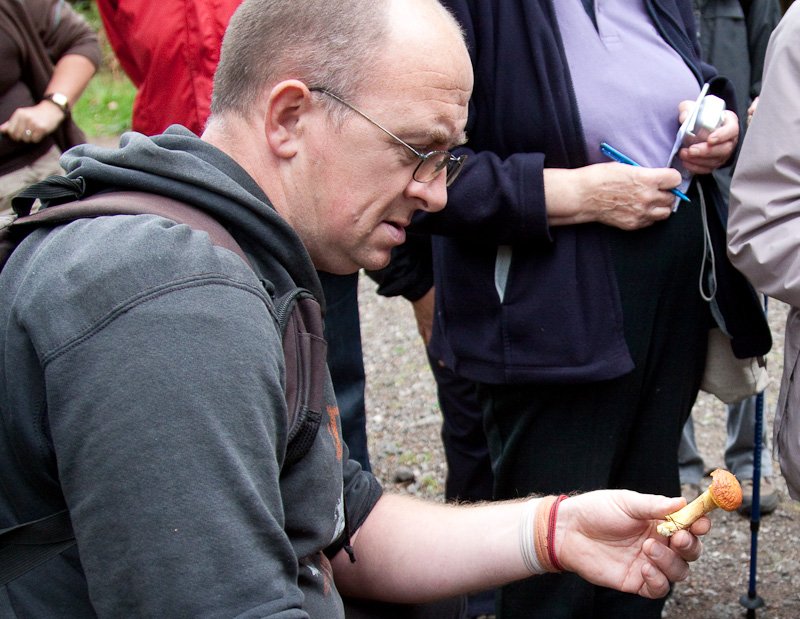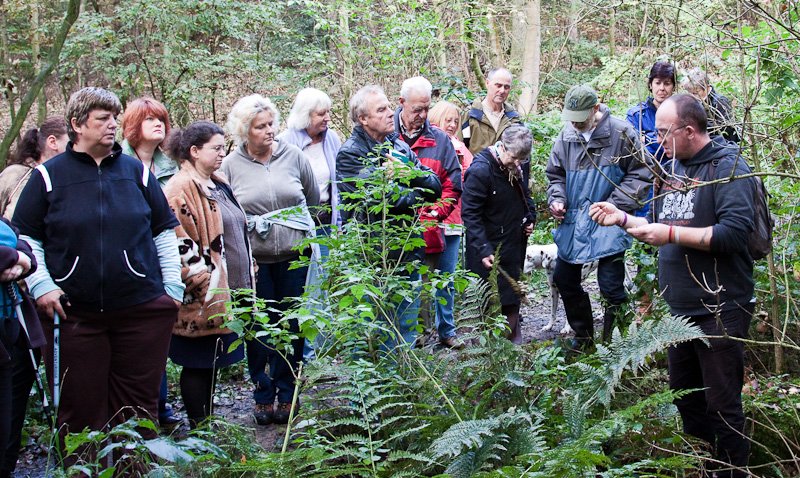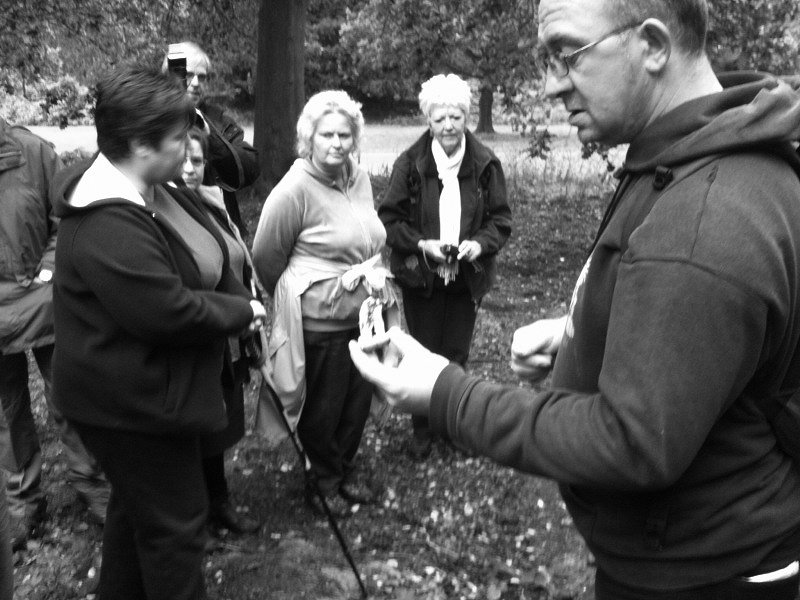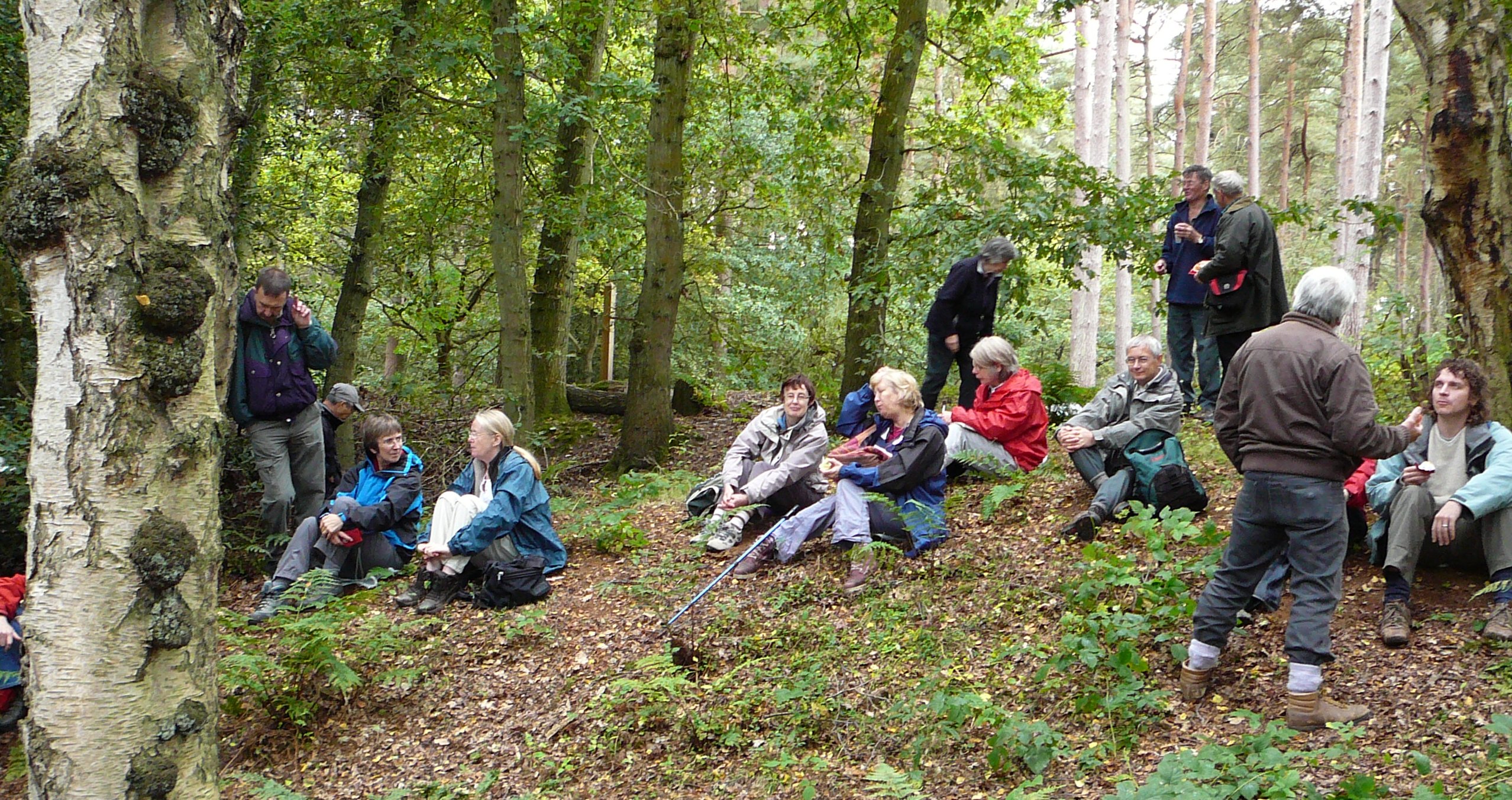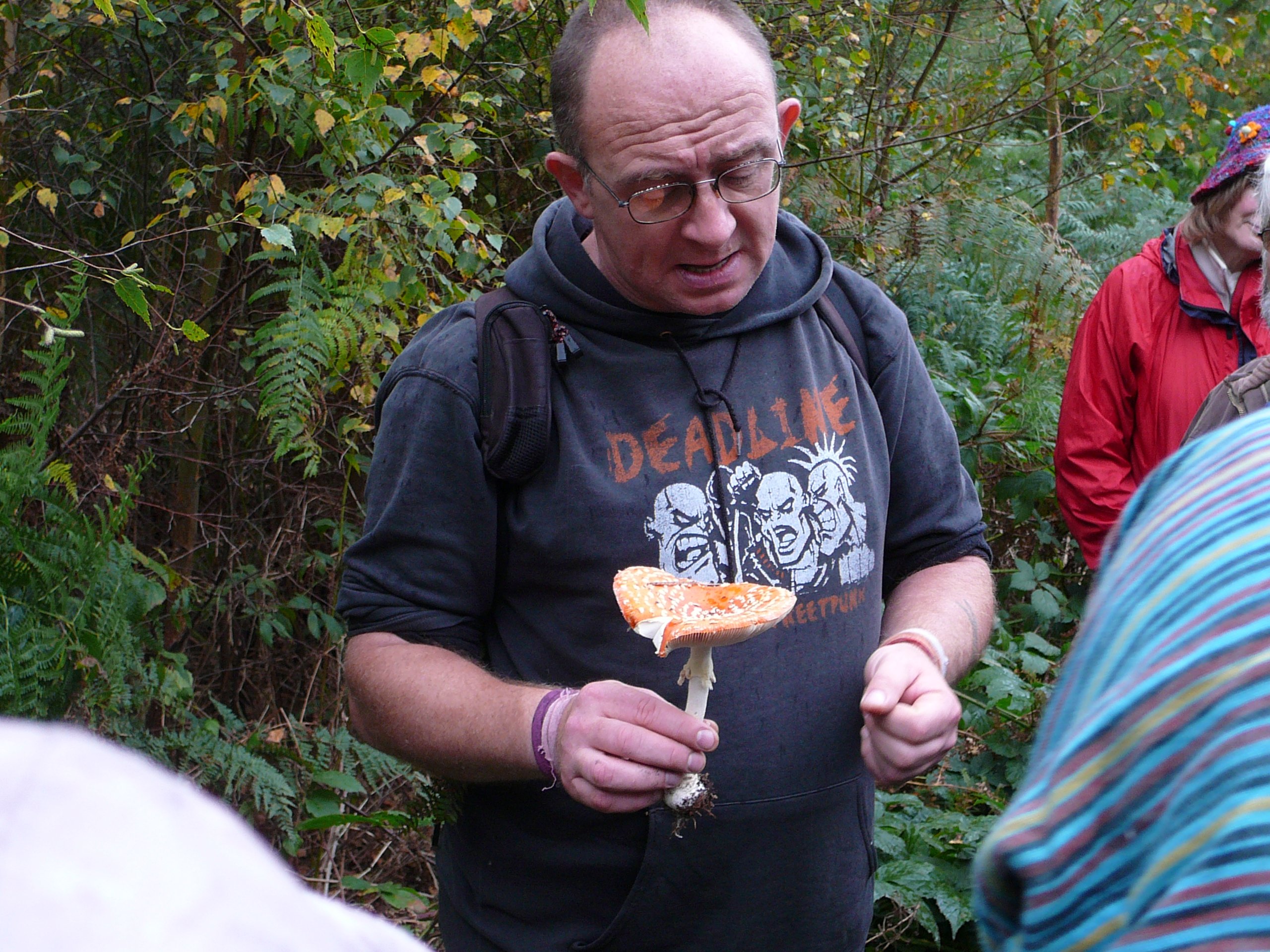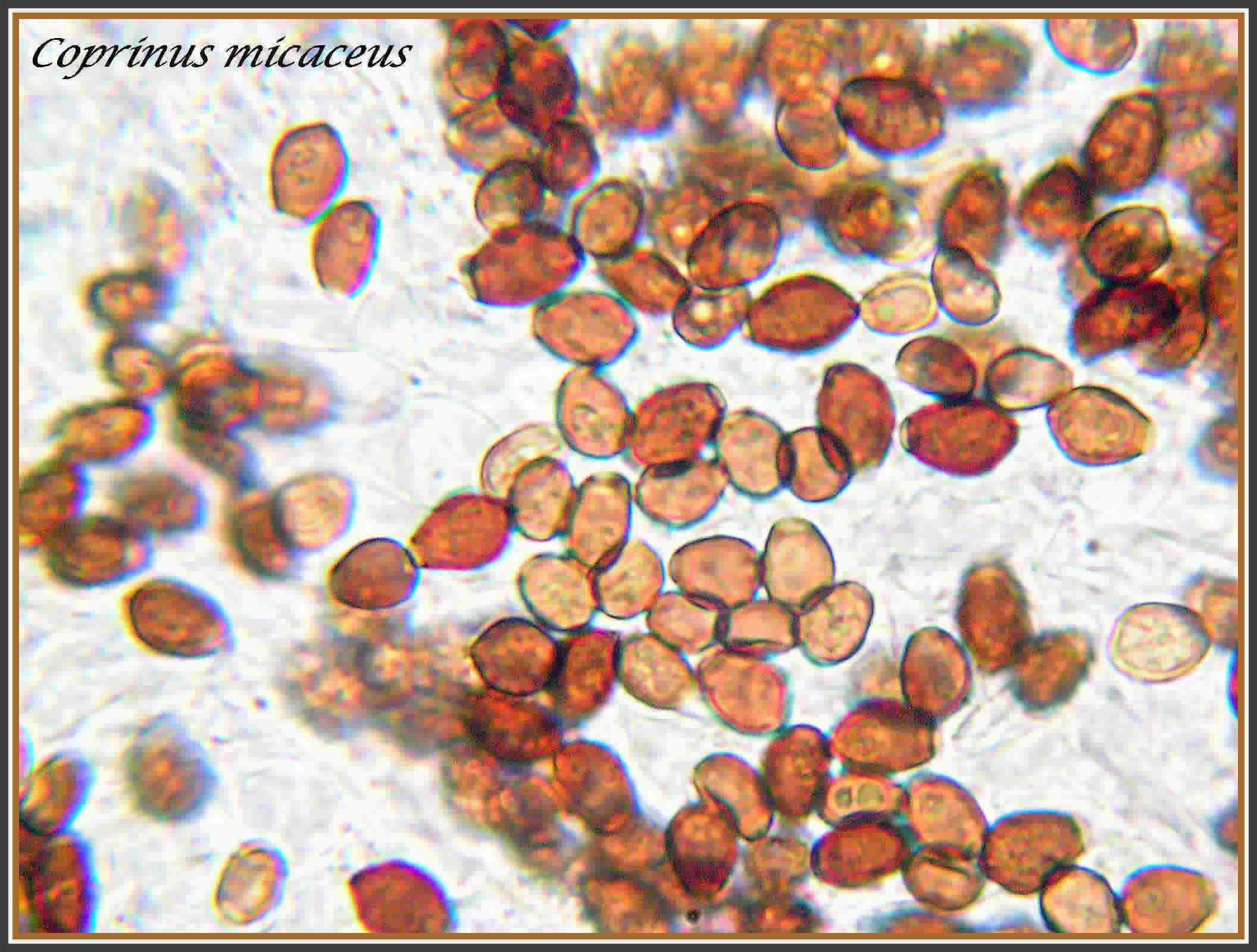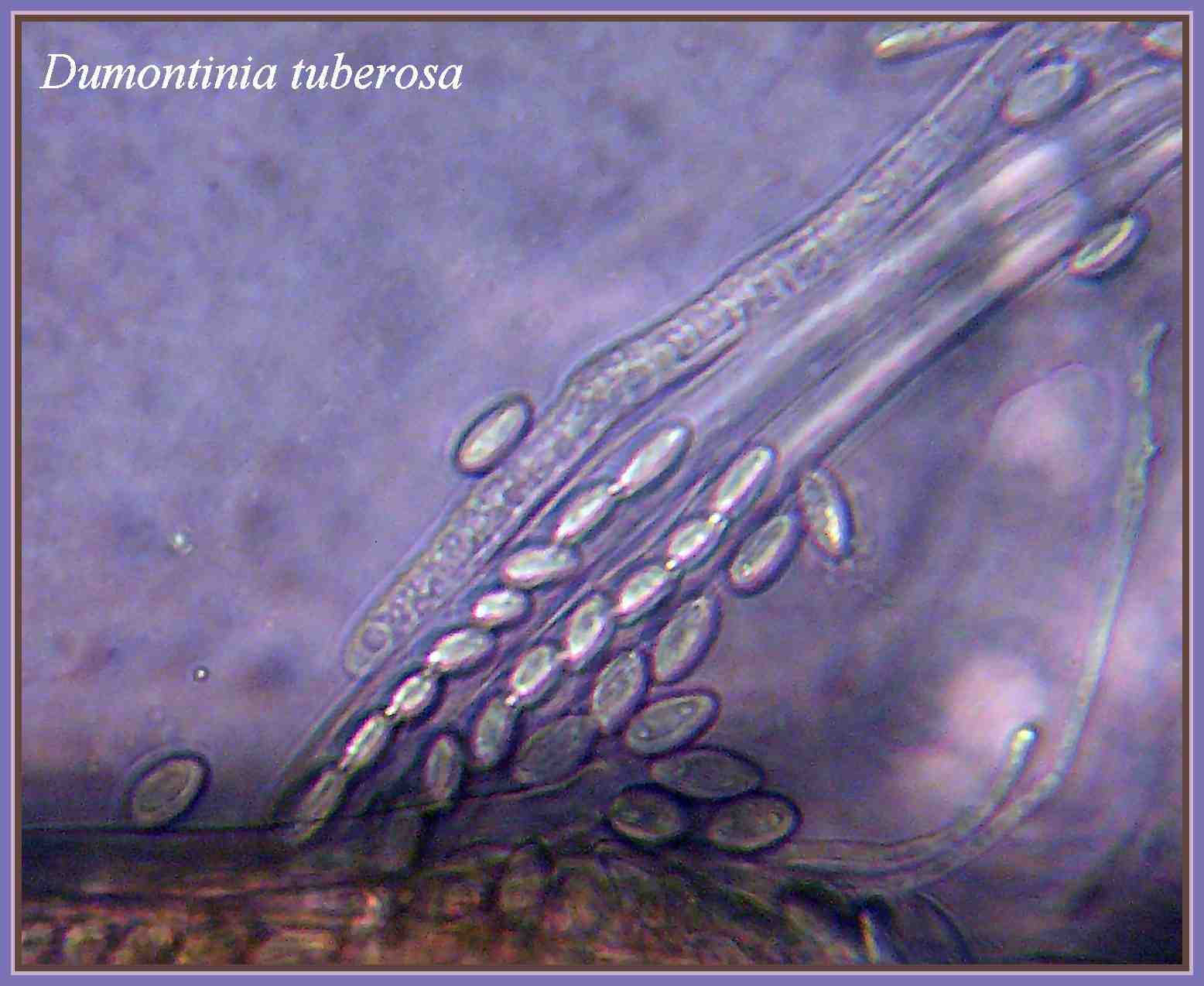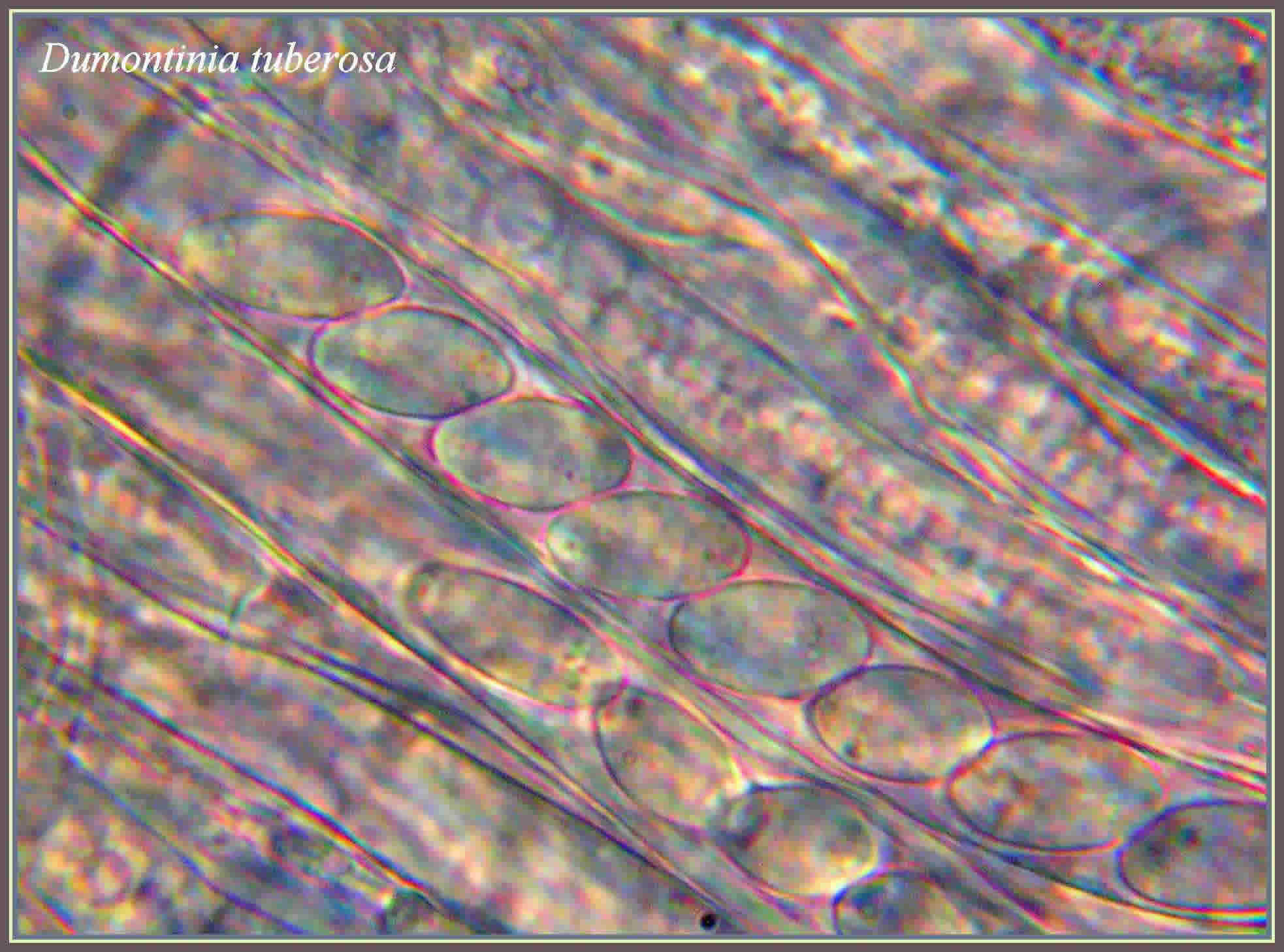FUNGAL FRIENDS GROUP NEWS 2009 |
|
(Member of the Fungus Conservation Trust - Registered Charity No. 1118651) |
|
Current news of interest to Fungal Friends. |
|
5 April 2009 - With a wicked winter behind us I am hoping the group can meet up on a monthly basis starting from April onwards. A few of us had a stroll at Etherow during March with little to see but it was good to catch up nonetheless. I will be sending e-mails out as and when the diary sees fit to give us a few hours spare so watch this space. Belated congratulations to Alison Turpin who won the competition set last October. Another one will hopefully be set later in the year with more mushie literature on offer. |
|
26 October 2009 - COMPETITION TIME - Well I feel it is about time to challenge all the members to a bit of fun and give them the chance to refresh the knowledge and win a nice prize in the process. There is only one prize and that is it. Two great fireside books for you to enjoy over the coming winter months to keep that fungal knowledge growing. Simply answer the eight questions below and e-mail to me at fungalpunk@hotmail.co.uk and you could win the following 2 tomes. |
|
Mushroom by J Acton and N Sandler |
Mushroom Miscellany by P Harding |
1. Lactarius turpis is very much at the brunt of fungal prejudice - oh the poor little mushie. It is one of my faves but what does 'turpis' actually mean? 2. The world of mycena identification has caused me many a sleepless night. A few can be named in the field especially the Milking Bonnet. What is its latin name? 3. The puffball tale I tell on my walks arises from the latin 'Lycoperdon'. What is the meaning of this somewhat vulgar name? 4. The Death Cap is not one to be trifled with but what genus of fungi does it belong to? 5. There are 3 types of British Stinkhorn but can you name them please? 6. If your specimen has a cobweb like veil beneath the cap what family is it more than likely to belong to? 7. What species is pictured below?. I find it quite regularly on my walks and the pores bruise blue when pressed upon.
8. Finally which of these have gills, pores or spines? a. Amethyst Deceiver b. Ear Pick Fungus c. Lumpy Bracket d. Two Tone Pholiota e. Penny Bun There ya go - e-mail me the answers and I will draw out the winning entry on the 1st December 2009. Good luck and go on have a go! |
|
24 October 2009 - Here's a review written for rECOrd after I had led a walk for them. A sincere thank you to Helen for listening sop attentively and taking time to review the day. Fungalpunk Foray’ The colourful flier for this event encouraged me (and many others) to sign up for another free event this time held in a different part of the beautiful Cheshire countryside. “Meet the legendary Fungalpunk Dave and find out about these curious and ecologically important organisms, including which you should definitely avoid for breakfast!” To a complete novice, the names of the fungi fascinated me: Puffballs, stinkhorns, truffles, black diamonds, oysters – I wondered which we would see! The minibus left the Zoo at 9.15am and met up with those using their own transport in the car park of the Nunsmere Hall Hotel, Oakmere. CountMeIn staff welcomed us and shared a number of book identification guides and magnifying glasses between us. We were introduced to Fungalpunk Dave and about 40 of us (all ages from 7 upwards) followed him immediately into the extensive grounds of the hotel. It wasn’t long before we came across our first fungi. Dave explained that the main body of a fungus consists of a dense network of mycelium which lies buried underground or in a tree trunk and what you see is just the fruit which is there to help develop the species. To help identify them it is essential to know the type of habitat where you find them – it could be mixed woodland, a specific tree species, glades, grassland, rough unimproved ground, bonfire or hedge. Sometimes, a species cannot be identified in the field, but samples of the spores, which cannot be seen with the naked eye, have to be taken back and studied under a microscope. Dave warned us not to eat raw wild fungi and never to pick fungi from the side of a road because they pick up the chemicals in the polluted air very easily. He gave us many useful tips even if we thought we had picked “edible”mushrooms. In fact, if in doubt always ask an expert or throw it away! Check each specimen! Don’t eat a lot at one sitting! Cook any you know to be edible properly!! Within a few metres of the car park he was identifying our first species on a grassy bank. We then moved on into the woodland and discovered many more, some of which we collected in containers for future reference. He showed us a fungus growing from cracks on the bark of a silver birch, which was a parasite and would in time kill that tree, as well as other birches in the vicinity if the tree was not felled and removed. From there, we found a ganoderma 'artists' fungus which grows as a parasite on beech trees, dropping 200,00 spores throughout the day and night! As we came across each fungi he showed us the main identifiable features such as colour, shape, texture, location, change of colour if pressed, or gives out a milky fluid, or even has a peppery smell – we found them all. We even found honey fungus which glows in the dark and sparks if you hit it with an axe and spreads by black cords resembling shoe laces. The common names were fascinating and many you could understand the reason for the wonderful names. The experts need the Latin names but I enjoyed names such as: turkey tail, devil’s snuff ball, ugly milk cap, foxy spot, brittle gills, bracket fungus (including blushing braket), candlesnuff fungus and sulphur tuft. As we walked around the different habitats, we found yet more fungi where there was extra moisture, so near the lake the woodland was teeming with different varieties, some now past their best and less easily identifiable. By lunch time it was good to see that the hotel building had emerged in front of us, where we were welcomed with a hot cup of tea or coffee to have with our sandwiches as we sat on the terrace. Soon we felt revitalised and off we went again with Dave to explore further afield in the grounds. By 3.30pm we had (or rather he had) identified nearly 50 species and our heads were full of valuable information and triggers to help us identify what we find in the future. As we gathered together at the end of a terrific day, Dave handed out leaflets, giving us valuable reminders about how to avoid mushroom poisoning, and many tips about using fungi for food. It was a gentle reminder to us, that we were not yet all experts like him! Thank you everyone – my eyes are open and on the way home, even out of the window, I saw a fungi on a tree on the A54 which I hadn’t noticed in the past. Proof of the value of the day! Helen Holyoak |
|
24 October 2009 - I have been inundated with photographs from forays recently and here are 4 to be going on with. These are all from the day out with rECOrd on the 17th of this month.
Obviously something of interest on the lawn
Perhaps if I hypnotise the mushie it will tell me its name
Ok we give in - get the books out
The books didn't work so we burnt them but what's that growing on the charred wood |
|
16 October 2009 - 3 more photographs of recent forays kindly sent in by group member Ian Turpin.
I may look puzzled but all along I knew it was only the Larch Bolete, Suillus grevellei - honestly
Some men just have all the luck - bah
It's a finger and it looks dead - so how about Dead Mans Finger everyone |
|
15 October 2009 - A bit of feedback from Moore NR via e-mail and a nice CLIP written by Frances Findlay for the FoAM newsletter regarding the Marbury CP forays. Oh and the piccie at the bottom of the piece was sent by my mate Tony who I usually see at punk gigs here and there. On this occasion he brought his sweet 3 year old daughter along to this mushroom mooch in the hope of finding some bears (that's what he told her anyway). Hope the mushies sufficed mate. I must thank you for a very interesting and informative day, despite the weather on the mooch around Moore Nature Reserve. Your obvious knowledge and enthusiasm made the event a success and I am glad I made the effort to attend. I have had a browse of the website and was impressed with what I found, both sides of the site, partial to some punk now and again ( I still have some vinyl somewhere from my youth). I hope to attend some of your future events and hope to pick up some knowledge myself. Ian Meir * * * FUNGAL FORAY MARBURY COUNTRY PARK SATURDAY 10 OCTOBER 2009 ‘MUSHROOM MOOCHING’ This is the title that FungalpunkDave gave to the two fungal forays at Marbury Country Park, on Saturday 10 October. A remarkably dry September had not encouraged the emergence of much fungi. However Dave’s experience, knowledge and guile helped visitors to find an interesting range in both sessions. The morning foray took place around the Carriage Drive and in Hopyards’s Wood, while the afternoon foray was largely in Big Wood. A visitor typically remarked: ‘I can’t believe that all these fungi are here and we walk past them daily and don’t see them.’ Among the 44 species found on the day were: orange peel, fly agaric, dead man’s fingers, candle snuff, purple jelly, jelly ear, deer fungus, shaggy ink cap, stinkhorn and dog’s stinkhorn as well as the rarer blue legged brownie. Dave’s enthusiasm, wit and repartee and a fund of lively fungal stories sustained the visitors’ interest throughout the day. He has generously agreed to lead FoAM’s next Fungal Foray on SATURDAY 16 OCTOBER, 2010.
|
|
9 October 2009 - A couple of photo's from the FWAG day courtesy of Helen Broughton
Lunchtime break in a nice broadleaf setting
Just to prove that leading forays can cause worry lines |
|
30 September 2009 - A couple of e-mails I received after taking a group around Delamere Forest - nice to get feedback especially the positive kind. One was sent straight to me and the other to Helen Broughton of FWAG who helped arrange the day. Dear Dave, Many thanks for the walk and talk on Wednesday around Delamere. My husband, daughter and I thoroughly enjoyed ourselves – and the Cep tasted fantastic after it had been cooked! Ian and I would like to join your group, so if you want to email me a membership form, I can print off three copies for us all and send you a cheque for £10.00. I hope the gig went well on the Wednesday night for you, too. Regards, Alison Turpin Helen - Thank you for arranging the Fungus walk in Delamere today. Dave is clearly passionate about the subject and is a gifted teacher imparting his knowledge in a very easy manner which made it very easy to learn. The day was beautifully organised and very well managed. I am very happy for you to pass on this message to the Chester Office. Thank you again for an interesting and rewarding day. Pam |
|
30 March 2009 - After a bit of pottering with the microscope I wondered what would happen if I pointed my daughters camera down the barrel with the lens still in. Tricky but after a few attempts I got the following picture of the spores of Glistening Ink Cap. What do you reckon? Not bad for a pot shot.
A bit more pottering, this time with the asci and spores of Dumontinia tuberosa which resulted in the following two shots.
The first picture shows the oil drops at each end of several spores. The second is a closer shot but the oil drops are barely apparent. Nice to see the spores in the ascus though. |
|
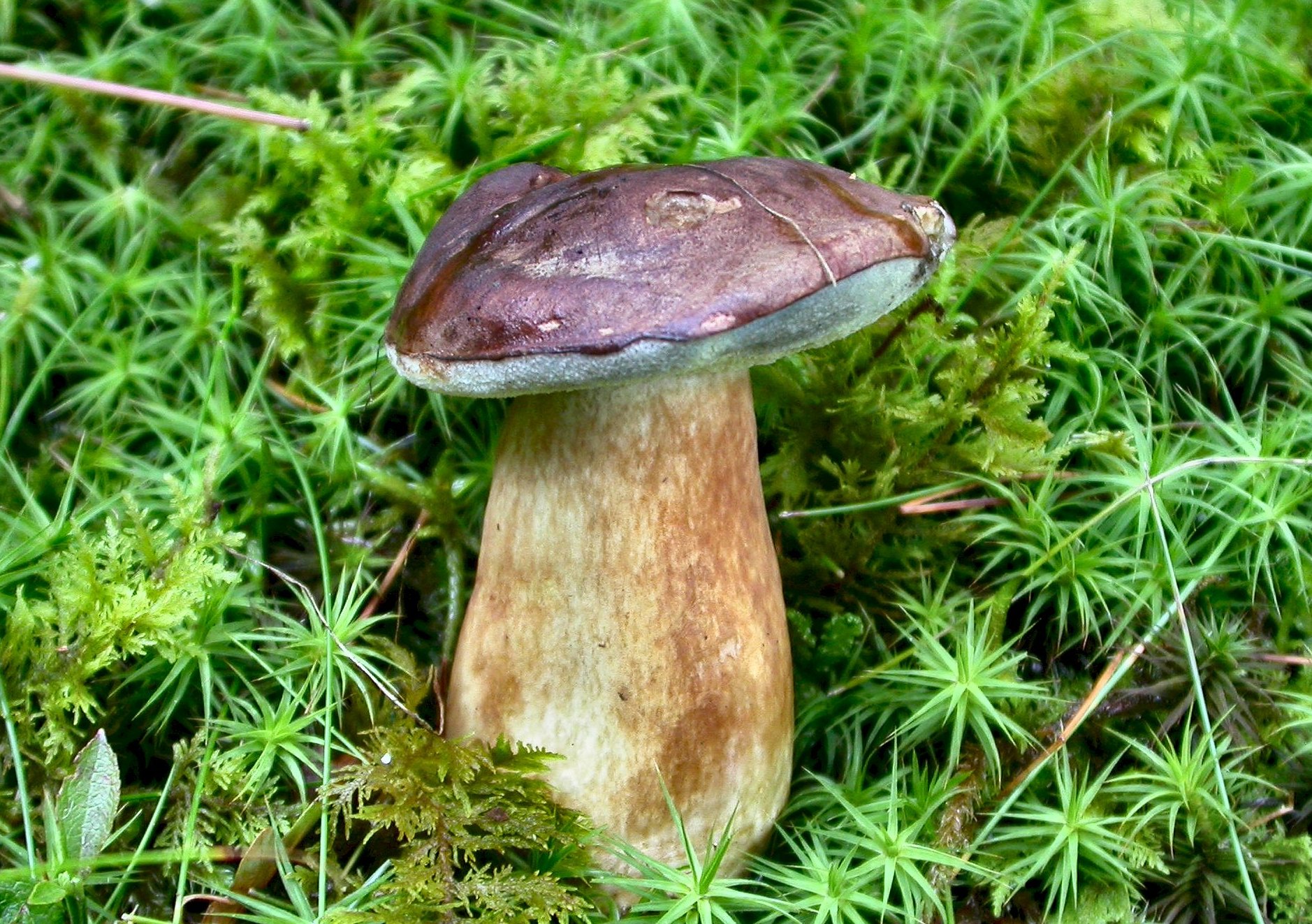
.jpg)
.jpg)
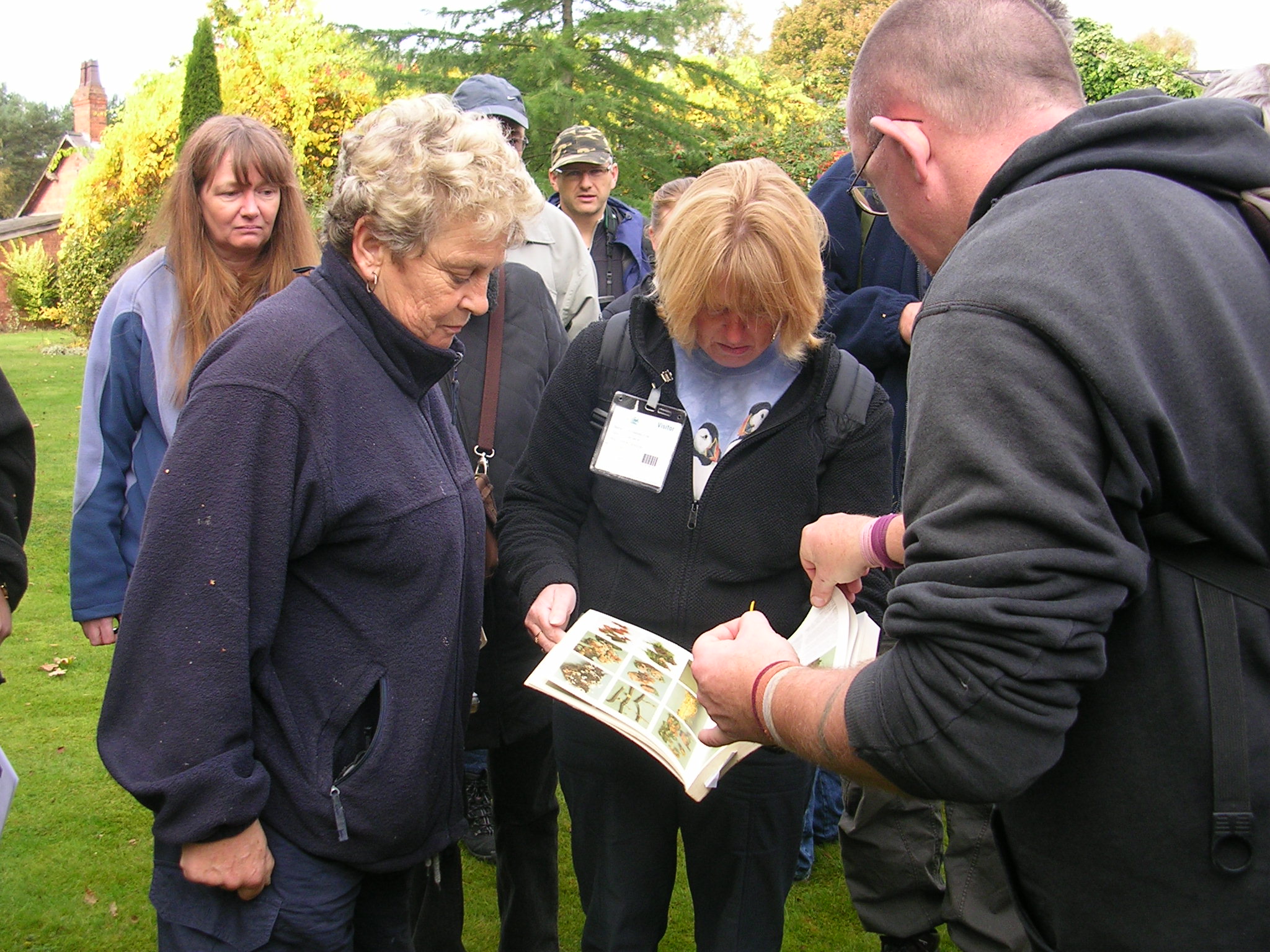
.jpg)
